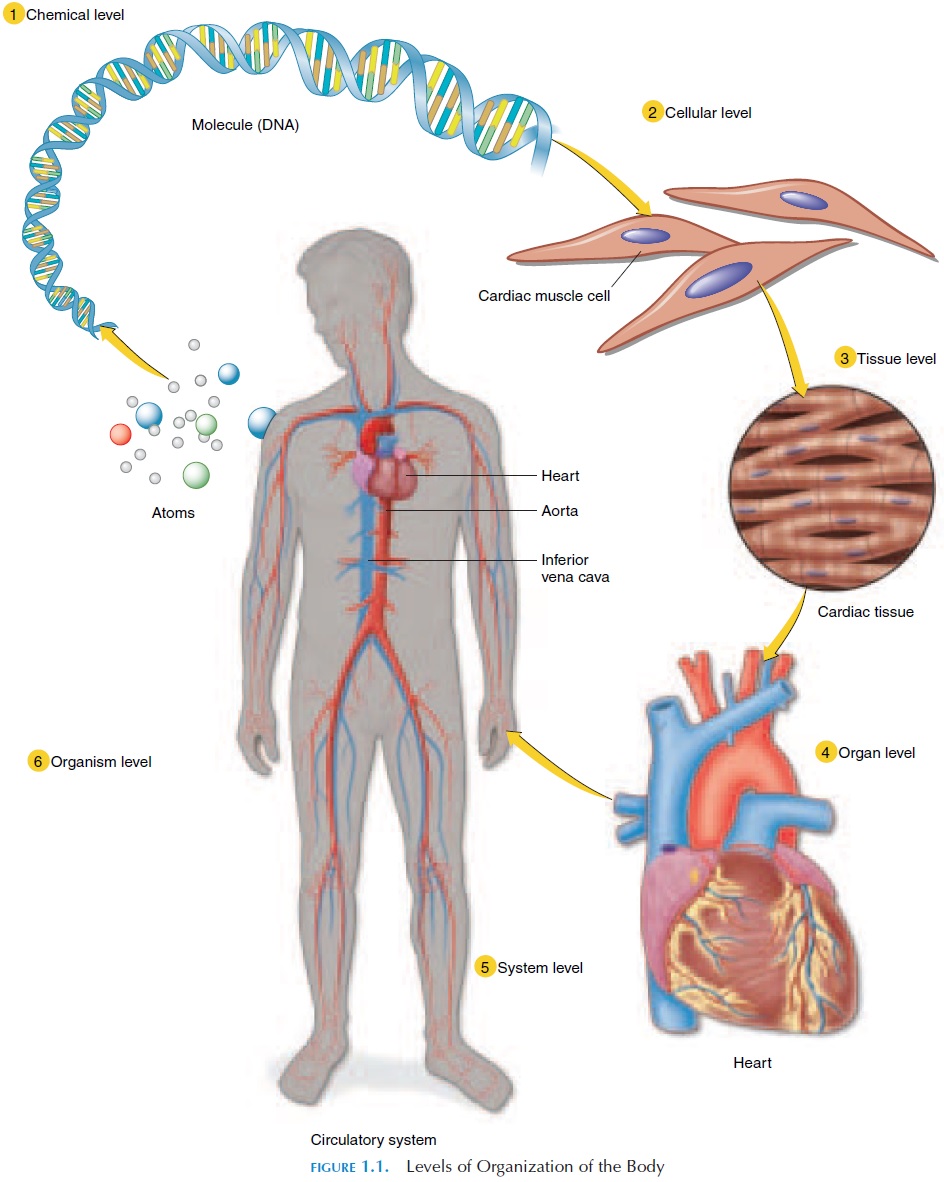Chapter: The Massage Connection ANATOMY AND PHYSIOLOGY : Introduction to Anatomy and Physiology
Levels of Organization-An Overview
Levels of Organization-an Overview
The body is made up of millions of individual units called cells. Cells are the smallest living part of the body. The cells, in turn, are made up of chemi-cals—atoms (e.g., carbon, hydrogen, oxygen, nitro- gen, and phosphorus), molecules, and compounds (proteins, carbohydrates) organized in different ways to form the structures inside the cell. A col-lection of cells having the same function is called tissue. For example, a collection of cells that pro-duce contraction is called muscle tissue. Different tissues that are grouped together and perform the same function are called organs. For example, the stomach, which helps with food digestion, is made up of muscle tissue that helps move the food, con-nective tissue that binds the muscle tissue, blood vessels and glands, epithelial tissue that lines the inside of the stomach, and nervous tissue that reg-ulates the movement and secretion of glands. Or-gans with the same function are grouped together as systems; an organ may be part of more than one system. For example, the respiratory system in-cludes organs that help deliver oxygen to the body; the reproductive system includes organs that help the organism reproduce. The body may be consid-ered to have six different levels of organization— chemical, cellular, tissue, organ, and systemic (see Figure 1.1) The highest level of organization— the organismal level—is the living body.

Related Topics